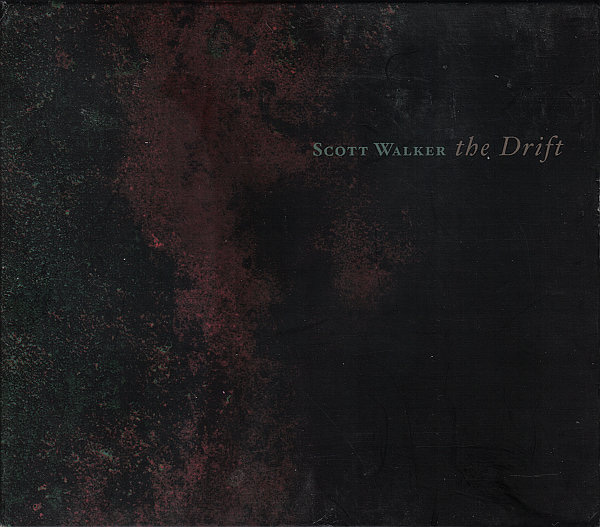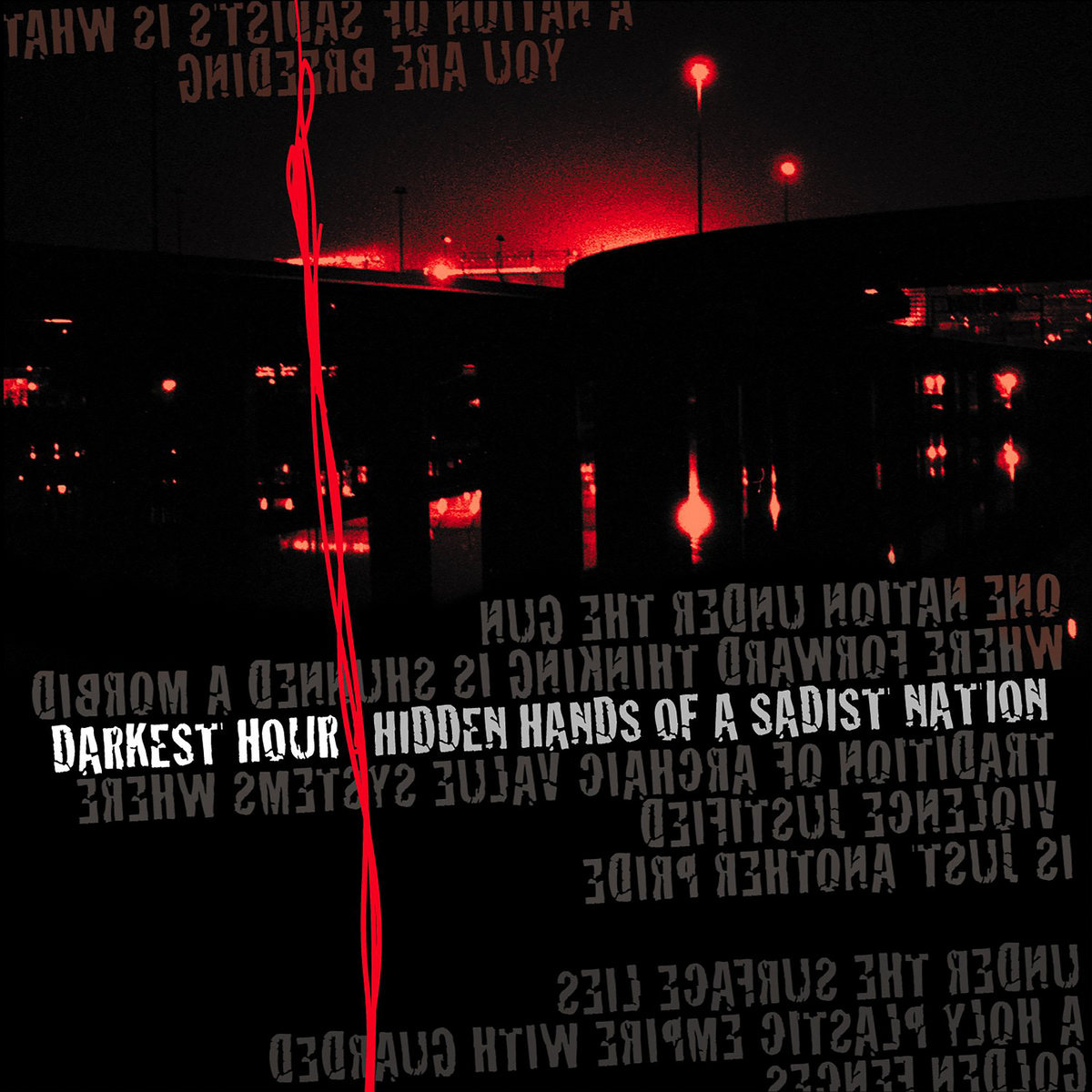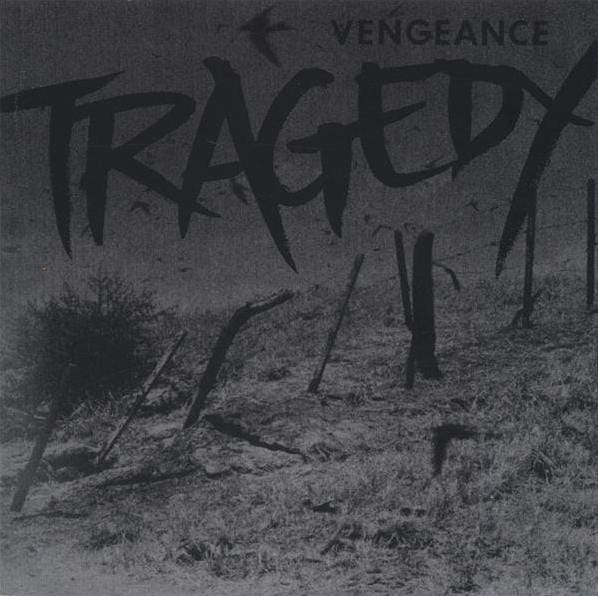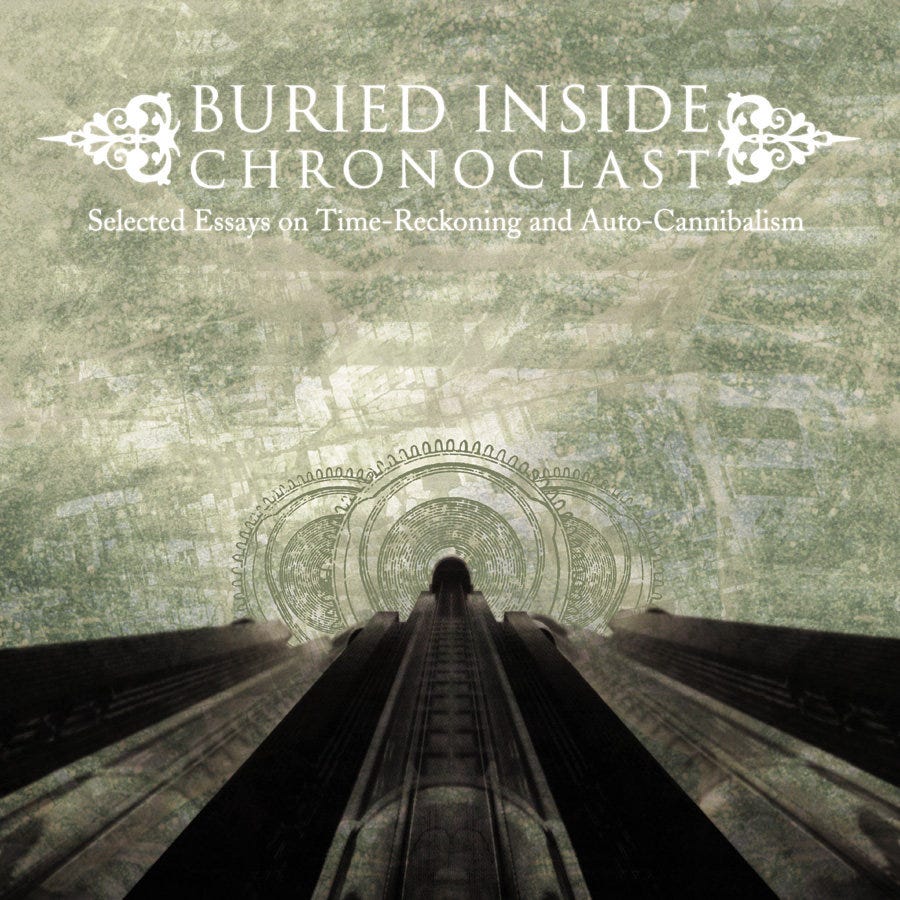Better Off Dead: Notes on Heavy Metal's Gothic Turn
Crossing oceans of time with old school charm
Last week I wrote about the announcement of the final Black Sabbath concert and made the dramatic claim that this event sufficed as a “funeral” for the genre of heavy metal. Some readers took umbrage with the implication that metal was therefore dead. I should have clarified that I by no means believe that death will have any effect on the overall health of the genre. On the contrary I think that, to quote one Finnish metal band from my youth, the genre is better off dead.
Allow me to offer two clarifications. First, as I noted last week, extreme metal had hardly any representation on the bill for Ozzy’s farewell. This is apt, as both death metal and black metal are healthier than ever. By which I mean that there are more black metal bands than ever and that thanks to a hype stimulus package from hardcore there are a lot of death metal bands large crowds and positive coverage as well as a healthy counterbalance of weird stuff for freaks (complimentary). Extreme metal does not need to be invited to this party.
My second clarification is that I should have put more emphasis on the “heavy” in heavy metal. This is a very old way of naming the genre, harkening back to an age when metal didn’t need to be classified into dozens of subgenres and niche scenes. Using the phrase “heavy metal” in 2025 denotes that the conversation is about bands that sing rather than scream, play guitars with fewer than seven strings, write songs with both choruses and solos, and so on. When I say “heavy metal” I’m referring to the genre’s mainline, an aesthetic that can be traced directly from 1970 to the present with few zigzags into other sonic territories. This is music that makes you sincerely throw up the horns, bang your head, and scour your local thrift stores for leather jackets and fading tour t-shirts. It is, in other words, metal for Boomers. It’s this version of the genre that Black Sabbath & Ozzy’s farewell signals a death knell for in a literal sense. The old guard is fading from view and taking the old recipes with them. But what of the band’s still playing heavy metal the old way in the modern era? What does the “death” of the genre mean for these younger guns? Luckily for them, death suites heavy metal quite well.
While I was writing my post about the Sabbath show I received an email announcing a co-headlining North American tour featuring Unto Others & Tribulation, two classic-ish heavy metal bands with new albums freshly released in 2024. The two bands, who also toured Europe in 2019, also share something else in common. They are unapologetically *goth* and, along with a handful of fellow travelers, are guiding classic heavy metal through a Gothic phase.
Long time readers will know that I’ve been following this Gothic turn in heavy metal for the last few years. I’ve made reference to it to keep track of heavy metal bands playing around with elements of goth rock in their music, as well as those who seem to operate with the understanding that old school metal is no longer a “living” document but a closed book. These bands play metal under the shadow of its old masters, as if a grim portrait of the NWOBHM scene hung ominously above their recording studios. Their songs haunt the ruined manors of heavy metal’s oldest families, reveling in the decay and drifting off into nostalgic reveries of better days now gone. I say all of this with love and with my tongue planted firmly in cheek. Taken as a loose cohort these bands are making some of the most exciting metal out there, building on the genre’s core pleasures while also speaking to the strange undead cultural space the genre occupies in the present day.
If the Gothic Turn can be attributed to any single band, Tribulation probably deserve the lion’s share of the credit. Though they began as a straightforward Swedish death metal act with a lyrical focus on classic horror themes, by 2015 they’d scaled back the intensity and ramped up the vampire shtick to 11. This sudden embrace of classic heavy metal guitar work and old school rock n roll showmanship earned them plenty of acclaim from the metal media but also set them apart from what the “cool” kids were listening to at the time. When I saw Tribulation open for Deafheaven in 2015 (at the peak of their post-Sunbather hype cycle) the audience took one look at their leather pants and exaggerated stage presence and asked by way of incredoulous glances “are these guys for real?”. Well, a decade later the knee high boot is on the other foot. Not only were Tribulation all the way serious about their goofy Nosferatu-ass aesthetic, plenty of other children of the night have joined them to howl sweet music at the moon.
Unto Others are less capital-g Gothic than Tribulation, but no less goth. The Portland based band, previously named Idle Hands, have released three albums of material that blends the chugging aggression of 80s thrash with the moody melodies of acts like Echo & The Bunnymen or Joy Division. Like Tribulation, Unto Others aren’t afraid to ride this dark and gloomy sound to its goofiest limits, though their sense of goth camp leans less Euro (fewer vampires) and more into American traditions like Satanic panic or hooting & hollering about basketball. Unlike Tribulation who only recently abandoned their vestigial harsh vocals, Unto Others serve up big, juicy cheeseburgers for vocal melodies, operating in an imagined version of the 1980s where Pat Benetar, Metallica, and Sisters of Mercy where all somehow the same band.
The rest of The Gothic Turn falls somewhere between these two poles. There’s Echoes Light, who like Tribulation started off playing death metal before embracing old school metal tools and melodies. There’s Final Gasp, who play a more hardcore inflicted take on Unto Others’ fusion of thrash and goth rock. There’s Sonja and Sumerlands, two bands writing classic heavy metal with cobwebbed and wistful melancholy that puts them in direct conversation with our headliners. Crypt Sermon and their sister band The Silver also feel connected to this movement at least spiritually if not in totality.
What unites this strange collection of bands isn’t just a production style or a visual aesthetic (though producer Arthur Rizk has his hands on multiple albums by this set). Instead what unites them is an embrace of the old ways tempered by an acknowledgment that those ways are in fact *old*. They are bands out of time playing a style whose time is up. They operate sincerely but with a gallows humor, posing the question that if they’re already dead what’s stopping them from having fun from beyond the grave?
# # # # # The Promo Zone # # # # #
To readers new and old, thank you for your time and attention. If you enjoyed this or any other post from this newsletter I encourage you to subscribe. Free subscribers get access to weekly posts like this one, as well as the full archive of Drumming Upstream (a series that I will return to once I wrap up some projects related to Progmatism ). For $5 a month or the ludicrously low price of $40 a year you will also get monthly+ annotated playlists, early & behind the scenes access to my music and other mysterious bonuses.
If you find what I have to say about music interesting, you might also be interested in the music that I make. Lamniformes is a band before it is a newsletter. As Lamniformes I’ve released two full lengths (The Lonely Atom and Sisyphean) one remix album (You Can’t Do This Alone) one EP (Thresher) and one “concept demo” (Trials). I love all of these releases for different reasons, but I’d encourage you to start with The Lonely Atom, which features my strongest hooks, most forward thinking production, and killer contributions from musicians across both the NYC heavy music & indie scenes. If you like it, grab a shirt and maybe even a cassette while you’re on my Bandcamp page!
~ ~ ~ ~ ~ Listening Diary ~ ~ ~ ~ ~
“Fortress” by Sorcerer (Devotion, 2024)
I knew I had to hear whatever that cover was advertising. Could have been a European Soundcloud rap album for all I cared. Thankfully Devotion was a Euro-hardcore record instead. Between this and Spiritworld I’m really into this video game-y aesthetic shift from modern beatdown bands. Sorcerer sound like the hardest band on the Undead Berg house show circuit. Music for medieval grunts.
“Cell By Cell” by Anne Helen Wells (AHW, 2025)
Anne Helen Wells (who played guitar on the Lamniformes songs “Deep Despair In Covington, KY” and “Measured in Rings”) sent me a copy of her debut album AHW in advance. This track was immediately my favorite of the bunch. My suspicion that it was a sure-fire crowd-killer was confirmed when I saw Wells perform it at her album release show last weekend at Cole’s Bar. The crowd went nuts. My favorite moment is when Wells brings back the title line vocal chop while the song is still in half time before the four-on-the-floor dance beat comes back in. Tons of great little details like that throughout the song.
“Second Movement” by Sonar (Three Movements, 2023)
Here’s another track courtesy of the fine folks in the Death//Sentence Discord channel. Some outrageously slick, understated odd time signature tomfoolery going on here. The shifting meters never break the mood, instead percolating under a wash of dub ambience and patient soloing. Like a guitar-centric Weather Report jamming on the menu music of a Playstation 2 racing game.
“Red Sea” by Asobi Seksu (Citrus, 2006)
Often when I stumble across bands that I had ample opportunity to hear for the first time earlier in my life I feel wistful the way I would reading an out of date missed connection. Citrus’s late appearance on my radar however feels like a bullet dodged. If I had heard Asobi Seksu as a high school student, which I easily could have considering they were based in Brooklyn, they would have rearranged my skull on the ceiling. To the point of today’s intro, shoegaze never really died out. Listening to “Red Sea” I can hear a conversation happening with Boris’s Pink, Jesu’s Silver, and M83’s Before The Dawn Hears Us, which all would have been on my iPod in 2006.
“Flight Feet and Root Hands” by Andreas Vollenweider (White Winds, 1984)
Shout out to the homie Alex Van Dorp of Altamira Records who pointed out this record to me during a trip to Los Angeles last December. The friends you share experimental electronic music with one decade will become the friends who send you new age records 10 years later. In truth this isn’t *that* far removed from jazz fusion, albeit played at softer velocity. It’s been a beautiful week here in Chicago, weather wise, and it’s been nice to listen to some music that’s suited for sunny days.
\ \ \ \ \ Micro Reviews / / / / /
Here are five micro reviews of albums from my vast Rate Your Music catalog. Long time Lamniformes Instagram followers will recognize these from my stories, however they’ve been re-edited and spruced up with links so that you can actually hear the music instead of just taking my word for it.
The Drift by Scott Walker (2006) - Art Pop
Released 11 years after Walker’s previous record, The Drift kicked off the elusive former pop star’s relatively prolific late period. it’s also when his music ramped up from eerie to flat out nightmarish. Any semblance of traditional arrangement is tossed out. Instead Walker surrounds his still sonorous voice with horror movie strings, punched meat as percussion, distorted horns, and other oddities. As was always the case with Walker, this startling instrumentation exists to serve his lyrics. I won’t pretend to have studied the lyrics on this record with much scrutiny, though I’d certainly like to. The bits and pieces I’ve picked up aren’t too pretty, talk of crucifixion, totalitarianism, dead children… you get the picture. Not for the faint of heart, but a must listen for thrill seekers.
[Editor’s Note: I’ve been thinking about this album a LOT lately while drafting some lyrical ideas for The Anamnesist. I won’t make any bold claims about writing music that sounds like Scott Walker, very little music does, but it’s part of the conceptual stew at the moment.]
Surface to Air by Zombi (2006) - Progressive Rock
I caught this synth & drum duo live opening for Isis when I was 16. At the time I had no frame of reference for the 70s prog rock and progressive electronic bands that Zombi were inspired by, so they sounded like the future to me instead of a throwback. Something to be said for bands keeping the old styles alive, you never know who’s going to hear what for the first time. This sounds like Rush scoring an Argento movie. Odd time synth arpeggios clattering against forcefully complicated drum parts. Despite the consistent style and limited instrumentation each of these five songs have a distinct identity and hook. A must-listen for prog nerds, athletically inclined drummers, and fans of expensive sounding synthesizers.
Hidden Hands of a Sadist Nation by Darkest Hour (2003) - Metalcore
Oh, if only the politically conscious metal of my youth had aged poorly. Alas, the only thing dated about this album’s lyrics is a reference to a pay phone. Eight righteously furious songs about gun violence, the spread of misinformation and nationalist chauvinism. Darkest Hour, long influenced by the Swedish melodeath sound, flew out to Gothenburg to record this one. They don’t quite match the caliber of the classic whose footsteps they followed, that’ll come on the next album, but Hidden Hands is top tier metalcore for its era. Riff after riff, all played with full bore intensity. Some ambitious formal stuff on the album’s back half too, especially the lengthy instrumental closer.
Vengeance by Tragedy (2002) - Crust Punk
If I recall correctly a friend of mine sent me a zip file with a bunch of His Hero Is Gone tracks and threw this record in as a bonus. Turns out I liked this album waaaay more than the His Hero stuff. I don’t have much context for crust punk, but this album rips. Massive guitar tone played at high speeds over airtight d-beat drums. The songwriting is great too, some real hooks hiding inside the distortion. Not too heavy to be tuneful, not so melodic that it won’t beat you up. The perfect punk record for metal fans.
Chronoclast: Selected Essays on Time-Reckoning and Auto-Cannibalism by Buried Inside (2005) - Post-Metal
A screamo record that was marketed to metalheads because calling it like it is would have been too confusing in 05. A remarkably compact concept record, essentially two symmetrical halves that share a bunch of riffs and progressions. That daunting subtitle is not kidding, the lyrics read like excerpts from a philosophy dissertation, which is the kind of wild stunt that only music with harsh vocals can get away with. The argument is that time is an ideological construct used for social conditioning and wage exploitation. I’m not sure their final analysis holds up to scrutiny (hey, it’s just a rock album, cut it some slack) but the music sells the shit out of it. Super fluid drumming, melodic bass lines, and some real heavy riffs where it counts. All in just 40 minutes! Very neat gem from the 00s heavy music scene.










Nice writing. Loving "Fortress".
"operating in an imagined version of the 1980s where Pat Benetar, Metallica, and Sisters of Mercy where all somehow the same band."
LOL